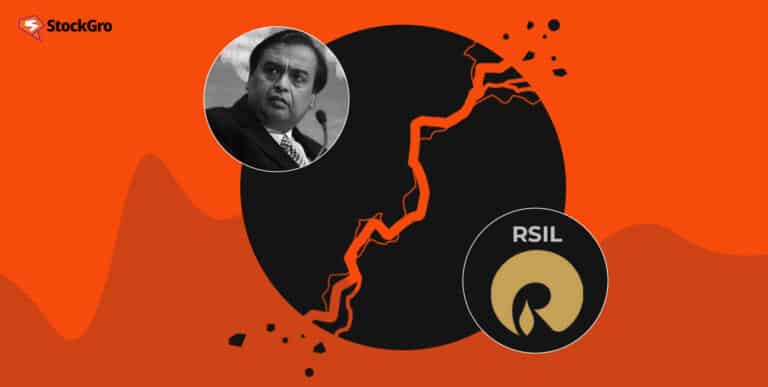
Have you ever tried to bargain for a product that you knew was worth more than what the seller was asking for? If you have, then you have already applied the basics of value investing in your daily life.
Value investing is like bargain shopping for stocks. It involves finding companies that are undervalued by the market and buying their stocks at a discount. Just like how you buy a product at a lower price than its actual value, value investors aim to buy stocks trading below their intrinsic value.
Benjamin Graham, the father of value investing, developed this approach to investing in the 1920s. He believed that the market often mispriced stocks, creating opportunities for investors to buy stocks at a discount. His book, “The Intelligent Investor,” is considered a bible for value investors.
Graham’s most famous student, Warren Buffett, followed his teachings and became one of the greatest investors of all time. Buffett’s investment philosophy is based on value investing. He says,
It’s far better to acquire a fabulous firm at a fair price than a fair company at a wonderful price.
What is value investing?
Value investing is a long-term investment strategy that focuses on finding undervalued stocks. It involves analysing a company’s financial statements, earnings, assets, and management to determine its true value.
The goal is to find companies that are trading at a discount to their intrinsic value and have strong fundamentals, such as a solid balance sheet, good cash flow, and a competitive advantage.
Concept of value investing
The basic concept behind value investing is simple: buy low, sell high. Value investors look for stocks that are temporarily undervalued by the market and offer a margin of safety. They believe that the market overreacts to good and bad news, causing stock prices to fluctuate in the short term but not necessarily reflecting a company’s long-term potential.
One key principle of value investing is to allow for a margin of safety. This means that value investors aim to buy stocks at a price significantly below their intrinsic value to ensure they have a cushion against future market downturns.
You may also like: RIL demerger: Why is Reliance detaching from its financial services arm RSIL?
Timing is key
Value investing is not just about buying stocks at a discount. It’s also about having the patience to wait for the market to recognise the true value of the investment.
Value investors are like farmers who sow seeds in the soil and wait patiently for them to grow into fruitful trees. Just like how the farmer has to wait for the right time to harvest the crop, value investors have to wait for the right time to sell their stocks.
How does value investing work?
Value investing involves a contrarian investment approach, where investors go against the market’s tendencies. Rather than following the crowd and buying stocks when everyone else is, value investors search for opportunities to buy stocks when they are undervalued.
To illustrate this concept, consider the example of Company A. If the market believes that Company A will perform exceptionally well in the future, its share prices may increase dramatically.
However, if a thorough analysis reveals that the company’s financial and organisational structure is average, its intrinsic value may be determined to be lower than its current share price.
In this case, value investors would consider Company A overvalued and look for opportunities to invest in companies with better long-term prospects but are currently undervalued.
How do investors derive intrinsic value?
Investors use various methods to determine whether a stock is undervalued, overvalued, or just right. Financial analysis is one of the most important ways to determine intrinsic value. Investors look at a company’s financial history, including its revenues and cash flows, to understand its profitability and growth potential.
They also examine a company’s business model, brand, target market, and competitive advantage to assess its long-term viability.
Also Read: GoFirst Bankruptcy: Airline’s possibility of revival seems unlikely
Some common metrics used in the fundamental analysis include:
Discounted Cash Flow (DCF) Analysis This method involves estimating the future cash flows of a company and then discounting them to their present value.
Price-to-Earnings (P/E) Ratio compares a company’s stock price to its earnings per share (EPS).
Price-to-Book (P/B) Ratio compares a company’s stock price to its book value per share (BVPS).
Dividend yield measures the amount of cash dividends paid out by a company relative to its stock price.
Other metrics include analysing debt, equity, sales, and revenue growth.
Qualitative Indicators
Investors also look for qualitative indicators that can signal whether a stock is undervalued or overvalued. These include:
- Indulgence in a financial scam
- Credit rating of the company
- Profit or loss during the previous market recession
After reviewing these metrics, the value investor can purchase shares if the comparative value—the stock’s current price vis-a-vis its company’s intrinsic worth—is attractive enough.
Advantages of value investing
So, why should you care about value investing? Here are a few compelling reasons:
- Potential for higher returns: If an undervalued stock eventually returns to its intrinsic value, investors can make a profit when they sell their shares.
- Lower risk: Because value investors buy stocks that are already undervalued, they are buying at a lower risk than those who buy overvalued stocks.
- Long-Term Focus: Value investing is a long-term strategy. It’s about finding companies with strong fundamentals that will perform well over time.
Disadvantages of value investing
Of course, no investment strategy is perfect. Here are a few potential downsides to value investing:
- Patience required: Finding undervalued stocks can take time and effort, and you may need to wait for the market to catch up to your analysis.
- Limited options: Since you’re looking for undervalued companies, your options might be limited.
- Potential for value traps: Just because a stock is undervalued doesn’t mean it’s a good investment. If a company struggles financially or has other fundamental issues, its stock price may not recover as expected.
- Short-term volatility: Undervalued stocks can be volatile in the short term, making it difficult for investors to ride out short-term fluctuations in the stock price.
- Intrinsic value may be hard to determine: Determining the intrinsic value of a stock can be difficult, and it requires a deep understanding of the company and its financials.
Also Read: ESG: A new formula for investing success?
Value investing vs Growth investing
| Value Investing | Growth Investing |
| Investing in companies that are undervalued in the stock market. | Investing in high-performing companies generating returns higher than average. |
| Value stocks trade at a low or discounted price. | Investing in high-performing companies generates returns higher than average. |
| Focuses on companies with a strong financial position and potential for long-term growth. | Focuses on companies with high growth potential, often in emerging industries or with innovative products/services. |
| Seeks to buy stocks that are trading below their intrinsic value, often due to market fluctuations. | Seeks to buy stocks that have strong earnings growth, even if they may be overvalued in the short term. |
| Value investing is generally less risky since undervalued companies are more stable and have a proven track record. | Growth investing is riskier than value investing since growth companies can be volatile and influenced by market fluctuations. |
Favours long-term investment strategy as market recognition of undervalued companies may take time. | Involves frequent trading, as growth companies are more prone to sudden price changes due to news or market mood. |
In conclusion, Value investing is a time-tested strategy that has proven to be successful for many investors. If you’re willing to put in the effort, value investing can be rewarding and profitable. So, cast your line and see what you can catch!

